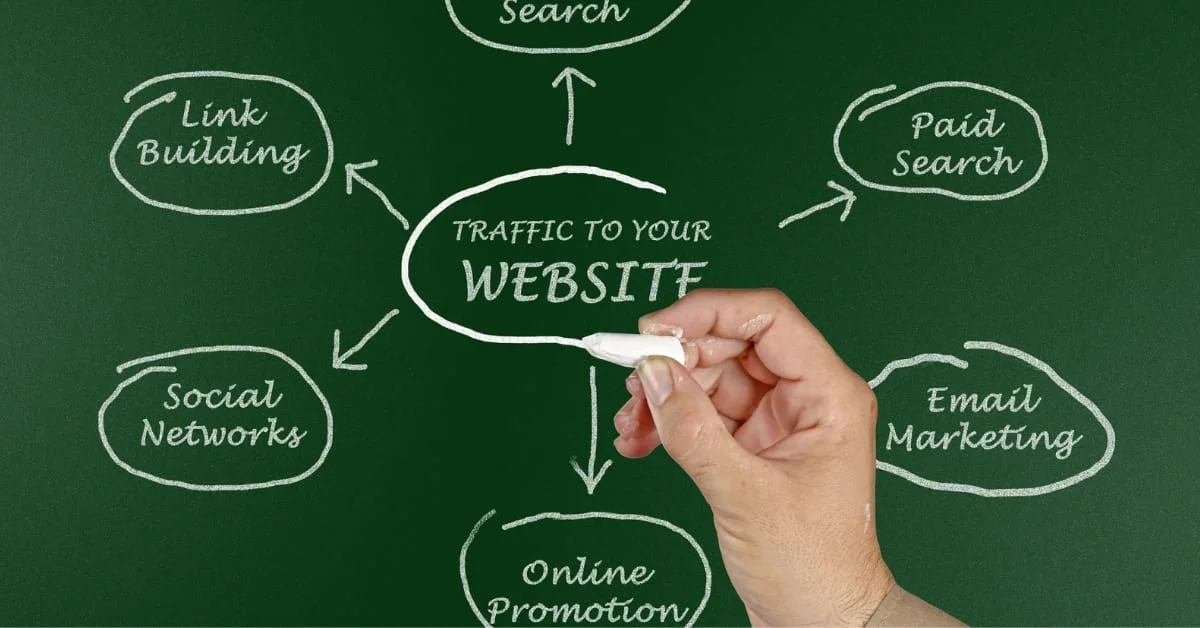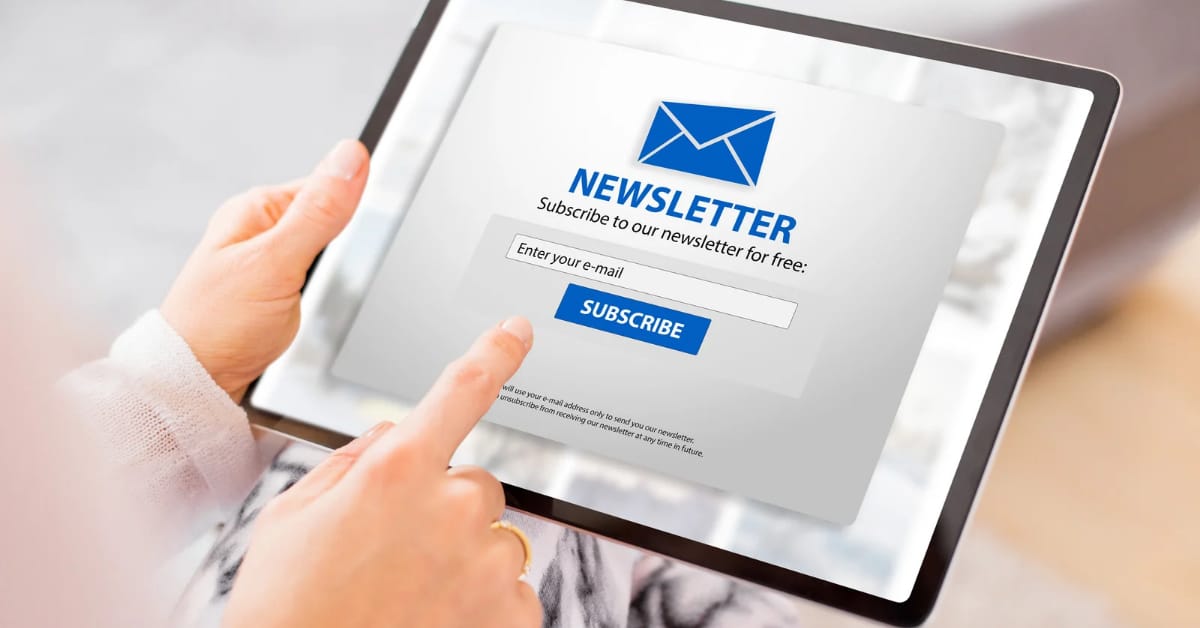Ever felt like your affiliate marketing efforts are just treading water? You’re not alone. Many affiliate marketers find themselves in a rut, struggling to drive consistent traffic to their offers. This is where paid traffic comes in—a powerful tool that can turbocharge your affiliate sales and take your earnings to the next level.
But what exactly is paid traffic, and why should you consider it? Simply put, paid traffic involves purchasing ads to drive visitors to your site or offer. Unlike organic methods, paid traffic allows you to see results quickly, scaling your efforts almost instantly. In this post, we’ll dive into the best strategies for using ads to supercharge your affiliate sales, from choosing the right platforms to optimizing your campaigns for maximum returns.
Ready to give your affiliate marketing a boost? Let’s dive in!
Understanding Paid Traffic and Its Benefits for Affiliate Marketing
Paid traffic is exactly what it sounds like—traffic that you pay for. Unlike organic traffic, which comes from unpaid sources like search engines or social media shares, paid traffic involves investing money to place ads on various platforms. The goal? To get potential customers to click on your affiliate links and make a purchase.

Why Paid Traffic?
You might be wondering, “Why should I pay for traffic when I can get it for free?” Great question! Here’s the thing: while organic traffic is fantastic, it’s not always reliable or scalable. It takes time to build up, and you can’t always control how much of it you’re getting. Paid traffic, on the other hand, offers several unique benefits that make it a valuable tool for affiliate marketers:
- Instant Results: Unlike organic methods, which can take months to show results, paid ads can drive traffic to your affiliate offers almost immediately. This is perfect if you’re looking to scale quickly or if you have a time-sensitive promotion.
- Targeted Audience: With paid ads, you can target specific demographics, interests, and behaviors. This means your ads are more likely to be seen by people who are genuinely interested in what you’re promoting, increasing your chances of making a sale.
- Scalability: Once you find a winning ad campaign, you can easily scale it up by increasing your budget. This means more traffic, more clicks, and more sales—all without waiting for your SEO efforts to kick in.
- Measurable and Trackable: Paid traffic allows you to track every click, impression, and conversion, giving you a clear picture of what’s working and what’s not. This makes it easier to optimize your campaigns for better results and higher profits.
In a nutshell, paid traffic gives you the control, speed, and data-driven insights you need to supercharge your affiliate sales. But where do you start? That brings us to the next key point: choosing the right platforms for your ads.
Key Platforms for Running Paid Ads
Now that we’ve covered why paid traffic can be a game-changer for your affiliate marketing, let’s talk about where to run your ads. With so many advertising platforms available, it can be overwhelming to figure out which one is the best fit for your affiliate business. To help you out, here’s a breakdown of some of the most popular platforms and their pros and cons:

1. Google Ads
Overview:
Google Ads is one of the most widely used advertising platforms, allowing you to place ads on Google’s search engine results pages (SERPs) and across its vast display network.
Pros:
- High Intent Traffic: Ads on Google search reach users who are actively searching for information, products, or services, making them more likely to convert.
- Extensive Reach: Google’s display network spans millions of websites, apps, and videos, giving you access to a vast audience.
- Detailed Targeting: You can target users based on keywords, location, device, and more, allowing for highly specific audience segmentation.
Cons:
- High Competition: Because it’s such a popular platform, competition can be fierce, especially for high-intent keywords. This can drive up the cost per click (CPC).
- Steep Learning Curve: Google Ads has a lot of features and options, which can be overwhelming for beginners.
Best for: Affiliate niches like technology, finance, and health, where users are actively searching for information or solutions.
2. Facebook Ads
Overview:
Facebook Ads allows you to promote your affiliate offers on Facebook’s social media platform, as well as on Instagram, Messenger, and its Audience Network.
Pros:
- Highly Targeted Audience: Facebook’s advanced targeting options let you narrow down your audience by demographics, interests, behaviors, and even life events.
- Engaging Ad Formats: You can use a variety of ad formats, including image ads, video ads, carousel ads, and more, which can be more engaging for users.
- Affordable: Generally, Facebook ads have a lower CPC compared to Google Ads, making them a cost-effective option for many marketers.
Cons:
- Ad Fatigue: Because users see a lot of ads on Facebook, there’s a risk of ad fatigue, where users become less responsive to ads over time.
- Limited Search Intent: Unlike Google Ads, Facebook users aren’t actively searching for your product or service, which can sometimes lead to lower conversion rates.
Best for: Niches that rely on visual appeal and impulse buys, like fashion, beauty, and lifestyle products.
3. Instagram Ads
Overview:
As part of Facebook’s advertising platform, Instagram Ads allow you to reach a younger, more visually oriented audience. Ads appear in users’ feeds and stories.
Pros:
- High Engagement Rates: Instagram is known for its high engagement rates, particularly with younger demographics who are more likely to interact with ads.
- Visual Appeal: The platform’s focus on photos and videos makes it perfect for brands that rely on strong visual content.
Cons:
- Limited to Visual Content: If your affiliate products or services don’t lend themselves well to visual content, Instagram may not be the best platform for you.
- Short Attention Span: Users on Instagram are used to scrolling quickly, so your ads need to grab attention immediately.
Best for: Fashion, beauty, travel, and other visually driven niches.
4. YouTube Ads
Overview:
YouTube, owned by Google, allows you to place video ads before, during, or after other videos on the platform.
Pros:
- Huge Audience: YouTube has over 2 billion logged-in users monthly, providing a massive audience for your ads.
- Video Engagement: Video ads can be very engaging and are perfect for demonstrating products or explaining complex offers.
Cons:
- Production Cost: Creating high-quality video ads can be expensive and time-consuming.
- Ad Skipping: Many users skip ads after the first 5 seconds, so your ad needs to grab attention quickly.
Best for: Products that benefit from visual demonstrations, such as tech gadgets, software, and educational services.
5. Other Platforms to Consider
- Pinterest Ads: Great for niches like home decor, fashion, and food, where users are looking for inspiration and ideas.
- Twitter Ads: Useful for reaching a broad audience quickly, especially for trending topics and timely promotions.
- LinkedIn Ads: Best for B2B affiliate marketers targeting professionals and businesses.
Each platform has its strengths and weaknesses, so the key is to choose one that aligns with your affiliate niche and audience. Once you’ve selected your platform, the next step is to set up your ad campaigns effectively. Let’s move on to that!
Setting Up Your Paid Ad Campaigns for Affiliate Sales
Choosing the right platform is only half the battle. The real challenge lies in setting up your ad campaigns in a way that attracts clicks, drives traffic, and ultimately converts that traffic into sales. Here’s a step-by-step guide to help you set up your paid ad campaigns for affiliate sales effectively.

1. Define Your Campaign Goals
Before you even begin creating an ad, it’s crucial to establish clear goals. Ask yourself: What do I want to achieve with this campaign? Are you aiming to generate leads, drive traffic to a specific landing page, or directly boost sales of an affiliate product?
Pro Tip: Make your goals SMART (Specific, Measurable, Achievable, Relevant, Time-bound). For example, “Increase affiliate sales by 20% over the next 30 days using Facebook Ads.”
2. Choose the Right Affiliate Product
Not all affiliate products are suited for paid traffic. Choose a product that not only offers a competitive commission but also has a high conversion rate. Ideally, you want a product that solves a common problem or fulfills a strong desire within your target audience.
Pro Tip: Look for affiliate products with proven sales records and positive customer reviews. This ensures you’re promoting a product that people actually want and are willing to pay for.
3. Craft Compelling Ad Copy and Visuals
Your ad copy and visuals are what will catch the eye of potential customers as they scroll through their feeds or search results. The key is to make them as compelling and relevant as possible.
- Headline: Grab attention with a strong, benefit-driven headline. Instead of “Buy This Product Now,” try something like “Discover the Secret to Effortless Weight Loss!”
- Body Text: Highlight the benefits of the affiliate product rather than just listing features. Explain how it solves a problem or improves the user’s life.
- Call to Action (CTA): Use a clear, strong CTA that tells users exactly what you want them to do next. For example, “Learn More,” “Get Started,” or “Buy Now.”
- Visuals: Use high-quality images or videos that are eye-catching and relevant to your product. Visuals should be consistent with your brand and resonate with your target audience.
Pro Tip: Test multiple versions of your ad copy and visuals to see which combinations perform best. This is known as A/B testing.
4. Set Up Your Landing Page
A great ad is useless if it leads to a poorly optimized landing page. Your landing page needs to be directly related to the ad and optimized to convert visitors into buyers.
- Keep it Relevant: Ensure that the content of the landing page matches the promise made in the ad. If your ad is about a weight loss supplement, the landing page should focus exclusively on that supplement.
- Clear and Concise: The page should be easy to navigate with a clear headline, engaging content, and a prominent CTA. Avoid clutter and keep the focus on converting the visitor.
- Mobile Optimization: Many users will access your landing page via mobile devices, so make sure it looks good and functions well on smaller screens.
Pro Tip: Use tools like Unbounce or Leadpages to create high-converting landing pages tailored to your campaigns.
5. Set Your Budget and Bidding Strategy
When setting up your paid ad campaigns, it’s important to start with a budget that you’re comfortable with. This allows you to test your ads and gather data without risking too much money upfront.
- Daily vs. Lifetime Budget: Decide whether you want to set a daily budget (the maximum amount you’re willing to spend per day) or a lifetime budget (the total amount you’re willing to spend over the entire duration of the campaign).
- Bidding Strategy: Choose between cost-per-click (CPC), cost-per-impression (CPM), or cost-per-acquisition (CPA) bidding strategies based on your goals. CPC is ideal for driving traffic, CPM for brand awareness, and CPA for conversions.
Pro Tip: Start with a low budget and gradually increase it as you identify which ads are performing well. This approach minimizes risk while maximizing learning.
6. Launch and Monitor Your Campaign
Once everything is set up, it’s time to launch your campaign! However, the work doesn’t stop there. Regular monitoring is crucial to ensure your campaign is performing well and achieving your goals.
- Track Metrics: Keep an eye on key metrics such as click-through rate (CTR), conversion rate, and return on ad spend (ROAS). These metrics will help you understand how well your ads are performing.
- Adjust and Optimize: If your campaign isn’t performing as expected, don’t be afraid to make changes. Adjust your ad copy, visuals, targeting, or budget based on the data you collect.
Pro Tip: Use analytics tools provided by the ad platform (like Facebook Ads Manager or Google Analytics) to gain deeper insights into your campaign performance.
By following these steps, you’ll be well on your way to setting up successful paid ad campaigns that drive affiliate sales. But remember, targeting the right audience is just as important as setting up the campaign itself. Up next, we’ll dive into targeting and segmentation to help you find the right audience for your ads.
Targeting and Segmentation: Finding the Right Audience for Your Ads
Getting your ads in front of the right people is crucial for the success of any paid traffic strategy. If your ads aren’t reaching your ideal audience, you’re likely to see low engagement, high costs, and disappointing results. This is where targeting and segmentation come in. By honing in on specific groups of people, you can make sure your ads are seen by those most likely to be interested in your affiliate products.

1. Understanding Audience Targeting
Audience targeting is all about defining the characteristics of the people you want to reach with your ads. Most ad platforms provide a range of targeting options to help you narrow down your audience based on demographics, interests, behaviors, and more.
- Demographics: These are basic characteristics like age, gender, income level, education, and location. For example, if you’re promoting a luxury skincare product, you might target women aged 30-50 with a higher income level.
- Interests: Interests are a powerful targeting option on platforms like Facebook and Instagram. These are based on the types of content users engage with, the pages they follow, and the activities they like. If you’re promoting fitness equipment, you could target users interested in fitness, healthy living, or specific workout routines.
- Behaviors: Behavioral targeting focuses on users’ actions and purchase behaviors. This can include recent purchasing behavior, device usage, or travel habits. For example, if you’re promoting a travel affiliate product, you might target frequent travelers or people who have recently returned from a trip.
Pro Tip: Combine different targeting options to create highly specific audiences. For example, target women aged 25-35 who are interested in yoga and have recently made an online purchase.
2. Using Lookalike Audiences
One of the most effective targeting strategies is the use of lookalike audiences. These are groups of people who share similar characteristics with your existing customers or website visitors. By targeting lookalike audiences, you can reach new people who are likely to be interested in your affiliate products based on their similarities to your best-performing audience.
- How to Create a Lookalike Audience: Start by uploading a list of your existing customers or website visitors to your ad platform (like Facebook Ads Manager). The platform will then analyze the list and find users who resemble your audience.
- Benefits of Lookalike Audiences: These audiences are highly effective because they are based on real data from people who have already shown interest in your products or services. This increases the likelihood of converting new users into customers.
Pro Tip: Segment your lookalike audiences further by adding additional targeting layers, such as demographics or interests, to narrow down your reach even more.
3. Retargeting: Bringing Back Interested Visitors
Retargeting (also known as remarketing) is a strategy that involves showing ads to people who have previously visited your website or engaged with your content but didn’t convert. This is a powerful way to re-engage potential customers who are already familiar with your brand and have shown some level of interest in your affiliate products.
- Set Up Retargeting Campaigns: To set up retargeting, you’ll need to install a tracking pixel or code on your website. This code will track visitors and allow you to show them ads as they browse other sites or use social media.
- Segment Retargeting Audiences: You can create different retargeting audiences based on user behavior. For example, you might target users who viewed a product page but didn’t complete a purchase, or users who added items to their cart but didn’t check out.
Pro Tip: Create multiple retargeting ads with different messages. For example, offer a discount to users who abandoned their cart or remind users of the benefits of the product they viewed.
4. Advanced Targeting Techniques
For those looking to get even more precise with their targeting, there are advanced techniques that can help you reach a highly specific audience.
- Geotargeting: This involves targeting users based on their geographic location. It’s useful for promoting affiliate offers that are location-specific, such as local services or events.
- Device Targeting: You can target users based on the device they’re using. This is particularly useful if you’re promoting a mobile app or want to tailor your ads to desktop versus mobile users.
- Custom Audiences: Many platforms allow you to upload your own customer data (such as email lists) to create custom audiences. This lets you target people who have already engaged with your brand through other channels.
Pro Tip: Regularly analyze the performance of your targeting settings and adjust as needed. Audience behavior can change over time, so it’s important to keep testing and optimizing.
By effectively targeting and segmenting your audience, you can ensure that your ads are reaching the right people, leading to higher engagement and better conversion rates. Once your targeting is set up, the next step is to measure your success. Let’s move on to how you can track your paid ad campaigns’ performance.
Measuring Success: KPIs and Metrics to Track Your Paid Ad Campaigns
Tracking the performance of your paid ad campaigns is crucial to ensure you’re getting the most out of your investment. Without proper measurement, it’s impossible to know which strategies are working and which ones need adjustment. To make informed decisions and optimize your campaigns, you need to focus on key performance indicators (KPIs) and metrics that reflect your campaign’s success.

1. Key Performance Indicators (KPIs) for Paid Ads
KPIs are specific metrics that help you evaluate the effectiveness of your paid ads. The right KPIs will depend on your campaign goals, but here are some of the most important ones to consider:
- Click-Through Rate (CTR): This measures how often people click on your ad after seeing it. A high CTR indicates that your ad is compelling and relevant to your target audience. It’s calculated by dividing the number of clicks by the number of impressions.
Pro Tip:
Aim for a CTR of at least 1% for display ads and 2% for search ads. If your CTR is below this, consider revising your ad copy or targeting. - Conversion Rate: This measures the percentage of users who take a desired action after clicking on your ad, such as making a purchase or signing up for a newsletter. A high conversion rate suggests that your landing page and offer are effective.
Pro Tip:
Regularly test different landing pages to see which converts best. Even small changes, like tweaking a headline or CTA, can significantly impact conversion rates. - Cost Per Click (CPC): This is the amount you pay each time someone clicks on your ad. It’s a critical metric for managing your ad spend and ensuring you’re not overpaying for clicks.
Pro Tip:
Monitor your CPC and adjust your bids or targeting to find a balance between cost and traffic quality. Lowering your CPC can help improve your overall return on investment (ROI). - Cost Per Acquisition (CPA): This measures how much it costs you to acquire a new customer or lead. It’s an essential metric for understanding the profitability of your campaigns.
Pro Tip:
Calculate your break-even CPA by determining how much you can afford to spend on acquiring a customer while still making a profit. Aim to keep your CPA below this threshold. - Return on Ad Spend (ROAS): This is the revenue generated from your ad campaigns compared to the amount spent on those campaigns. It’s calculated by dividing the revenue by the ad spend.
Pro Tip:
A ROAS of 4:1 (earning $4 for every $1 spent) is often considered good, but this can vary depending on your industry and goals. Continuously strive to improve your ROAS by optimizing your ads and targeting.
2. Tools for Tracking and Analyzing Performance
To effectively measure your KPIs, you need the right tools. Most ad platforms come with built-in analytics, but there are also third-party tools that can provide deeper insights:
- Google Analytics: A free tool that allows you to track website traffic, user behavior, and conversion rates. It’s invaluable for understanding how users interact with your site after clicking on your ads.
Pro Tip:
Set up conversion tracking in Google Analytics to monitor actions like purchases, sign-ups, and downloads. This will help you attribute conversions to specific ads and keywords. - Facebook Ads Manager: Provides detailed analytics for your Facebook and Instagram ad campaigns, including metrics like CTR, CPC, and conversion rates.
Pro Tip:
Use the breakdown feature in Facebook Ads Manager to analyze your campaign performance by age, gender, location, and device. This can help you identify which segments are performing best. - Google Ads: Offers a comprehensive set of tools to track and optimize your search and display campaigns. You can view metrics like CTR, CPC, and conversion rates in real time.
Pro Tip:
Use the Google Ads conversion tracking feature to measure specific actions taken on your website after someone clicks on your ad. This data can help you optimize your campaigns for better results. - Hotjar: A behavior analytics tool that provides insights into how users interact with your landing pages through heatmaps, session recordings, and surveys.
Pro Tip:
Use Hotjar to identify where users are dropping off on your landing page. This information can help you make data-driven decisions to improve your page’s performance.
3. Analyzing and Optimizing Your Campaigns
Once you have your tracking tools set up and your KPIs in place, it’s time to analyze your data and optimize your campaigns. Here’s how to do it:
- Review Your Metrics Regularly: Make it a habit to check your campaign metrics daily or weekly. Look for trends and changes in performance, such as a sudden drop in CTR or a rise in CPC.
Pro Tip:
Create custom reports in your analytics tools to easily track your most important metrics over time. This will help you spot trends and make data-driven decisions. - Identify Areas for Improvement: Use your data to identify which aspects of your campaign are underperforming. Are your ads not getting enough clicks? Are your conversion rates lower than expected?
Pro Tip:
Run A/B tests to determine what changes improve performance. Test different ad copy, visuals, landing pages, and targeting settings to find the winning combination. - Optimize Based on Performance: Adjust your campaigns based on what you’ve learned. If a particular ad or audience segment is performing well, consider increasing your budget for that segment. If something isn’t working, try a new approach or stop running that ad altogether.
Pro Tip:
Don’t be afraid to cut your losses. If a campaign isn’t delivering the desired results after thorough testing and optimization, it may be better to stop it and allocate your budget elsewhere.
By measuring the right KPIs and continuously analyzing your campaign performance, you can optimize your paid ad strategies and maximize your affiliate sales. But, as with any marketing effort, there are common pitfalls that can derail your success. Next, we’ll look at some of these common mistakes and how to avoid them.
Common Mistakes to Avoid with Paid Traffic in Affiliate Marketing
While paid traffic can be a powerful tool for supercharging your affiliate sales, it’s not without its pitfalls. Even seasoned marketers can make mistakes that lead to wasted ad spend, low conversion rates, and missed opportunities. To help you avoid these common errors, here are some of the most frequent mistakes affiliate marketers make with paid traffic and how to steer clear of them.

1. Not Defining Clear Goals
One of the biggest mistakes is diving into paid advertising without a clear set of goals. If you don’t know what you want to achieve, it’s impossible to measure success or optimize your campaigns effectively.
How to Avoid:
- Set Specific Goals: Before launching any campaign, clearly define what success looks like for you. Are you aiming to increase sales, generate leads, or drive traffic? Make sure your goals are specific, measurable, achievable, relevant, and time-bound (SMART).
- Align Campaigns with Goals: Every ad campaign should have a specific purpose. Make sure your ad copy, visuals, and landing pages are all aligned with your campaign goals.
Pro Tip: Regularly revisit your goals and adjust them based on your campaign’s performance. Flexibility is key to long-term success.
2. Targeting the Wrong Audience
No matter how great your ads are, if they’re not reaching the right audience, they won’t perform well. Poor targeting can lead to low engagement rates and high costs.
How to Avoid:
- Understand Your Audience: Take the time to research and understand your target audience. Know their demographics, interests, behaviors, and pain points.
- Use Detailed Targeting: Use the detailed targeting options available on ad platforms to narrow down your audience. Don’t be afraid to get specific—targeting too broadly can dilute your ad’s effectiveness.
Pro Tip: Regularly analyze your audience data and adjust your targeting settings based on performance. Audience preferences and behaviors can change over time.
3. Ignoring the Importance of Ad Copy and Visuals
Your ad copy and visuals are the first things potential customers will see. If they’re not compelling, your ads won’t capture attention or drive clicks.
How to Avoid:
- Focus on Benefits: Write ad copy that highlights the benefits of the product, not just its features. Tell your audience how the product will solve their problems or improve their lives.
- Use High-Quality Visuals: Invest in high-quality images or videos that are relevant to your product and audience. Poor visuals can make your ads look unprofessional and reduce trust.
Pro Tip: Test multiple versions of your ad copy and visuals to see what resonates best with your audience. Small tweaks can make a big difference in performance.
4. Not Optimizing Landing Pages
Sending paid traffic to a poorly optimized landing page is a sure way to waste money. If your landing page doesn’t deliver on the promise of your ad or isn’t user-friendly, visitors will leave without converting.
How to Avoid:
- Match Your Landing Page to Your Ad: Ensure your landing page content is directly related to your ad. If your ad promotes a specific product, the landing page should feature that product prominently.
- Simplify the User Experience: Make it easy for visitors to take the desired action. Use clear headlines, concise copy, and a strong call to action (CTA). Remove any unnecessary elements that could distract or confuse visitors.
Pro Tip: Regularly test and optimize your landing pages for conversion. Use tools like A/B testing to find out what works best.
5. Failing to Monitor and Adjust Campaigns
Once your ads are live, your job isn’t done. Failing to monitor and adjust your campaigns can lead to wasted ad spend and missed opportunities to optimize for better results.
How to Avoid:
- Track Your Metrics: Keep a close eye on your key performance indicators (KPIs), such as click-through rate (CTR), conversion rate, and return on ad spend (ROAS).
- Make Data-Driven Decisions: Use your data to make informed decisions about your campaigns. If something isn’t working, be prepared to make changes or try a different approach.
Pro Tip: Set up automated rules in your ad platform to pause or adjust underperforming ads. This can save time and help you avoid unnecessary spending.
6. Overlooking the Importance of Testing
Many marketers launch their campaigns without testing different elements first. This can result in suboptimal performance and missed opportunities for improvement.
How to Avoid:
- A/B Test Everything: Test different versions of your ads, landing pages, and targeting settings to see what works best. Even small changes can have a big impact on your results.
- Test One Variable at a Time: To get accurate results, test only one variable at a time. For example, if you’re testing different ad copy, keep the visuals and targeting the same.
Pro Tip: Keep a record of all your tests and their results. This will help you learn what works for your audience and improve your campaigns over time.
By avoiding these common mistakes, you can make the most of your paid traffic efforts and maximize your affiliate sales. Once you’ve mastered the basics, you can move on to more advanced strategies for scaling your campaigns. Let’s dive into that next!
Advanced Tips for Scaling Your Paid Traffic Strategies
Once you’ve got the hang of setting up successful paid ad campaigns, the next step is to scale those efforts to maximize your affiliate sales even further. Scaling your campaigns means increasing your ad spend, expanding your reach, and optimizing your strategies to generate higher returns. However, scaling isn’t just about throwing more money at your ads—it’s about doing it smartly to ensure sustainable growth and profitability.

Here are some advanced tips to help you effectively scale your paid traffic strategies for affiliate marketing:
1. Gradually Increase Your Budget
When you find a winning ad campaign, it can be tempting to immediately double or triple your ad spend. However, scaling too quickly can lead to unpredictable results and wasted budget.
How to Scale:
- Increase Budget Incrementally: Start by increasing your budget by 10-20% and monitor the impact on your performance metrics. Gradually scale up while keeping a close eye on your key performance indicators (KPIs) like cost per acquisition (CPA) and return on ad spend (ROAS).
- Monitor for Consistency: As you increase your budget, make sure your campaign’s performance remains consistent. If you notice a decline in performance metrics, consider scaling back or testing new strategies.
Pro Tip: Avoid making large budget changes all at once. Ad platforms use algorithms that can take time to adjust to new budget levels, and sudden increases can lead to inefficiencies and higher costs.
2. Expand Your Audience
Scaling isn’t just about spending more; it’s also about reaching more people. By expanding your audience, you can tap into new segments that might be interested in your affiliate products.
How to Scale:
- Broaden Your Targeting: Start by gradually broadening your targeting parameters, such as increasing the age range or expanding to new geographic locations. Use the data from your existing campaigns to identify new audience segments that are likely to convert.
- Leverage Lookalike Audiences: Use lookalike audiences to reach people who are similar to your existing customers or website visitors. These audiences are often highly effective because they share characteristics with your best-performing audience.
Pro Tip: When expanding your audience, test new segments separately to measure their performance without impacting your core campaigns. This helps you optimize each audience group individually.
3. Optimize Your Ad Creative and Copy
As you scale, you’ll need to keep your ad creative fresh to avoid ad fatigue—a phenomenon where your audience becomes less responsive to your ads over time.
How to Scale:
- Test New Creative Formats: Experiment with different ad formats, such as video ads, carousel ads, or dynamic ads. Different formats can capture attention in new ways and keep your audience engaged.
- Refresh Your Ad Copy: Regularly update your ad copy to reflect new promotions, product features, or seasonal trends. Keep your messaging aligned with your audience’s interests and pain points.
Pro Tip: Use data from your highest-performing ads to inform new creative ideas. For example, if a certain image or headline performs well, consider using similar elements in your new ads.
4. Utilize Advanced Bidding Strategies
To maximize your ad spend, consider using advanced bidding strategies that optimize for specific actions or goals, rather than just clicks or impressions.
How to Scale:
- Use Automated Bidding: Many ad platforms offer automated bidding strategies, such as target CPA or target ROAS, which use machine learning to optimize your bids for conversions. This can help you achieve better results at a lower cost.
- Bid Adjustments: Adjust your bids based on performance data. For example, increase bids for high-performing keywords or decrease bids for underperforming segments.
Pro Tip: Regularly review your bidding strategies to ensure they’re aligned with your campaign goals. Automated bidding can be highly effective, but it’s important to monitor performance and make adjustments as needed.
5. Retarget and Upsell
Retargeting is a powerful tool for scaling your paid traffic strategies because it focuses on users who have already shown interest in your products.
How to Scale:
- Segment Your Retargeting Audiences: Create different retargeting ads for users based on their level of engagement. For example, show one ad to users who visited your site but didn’t convert, and a different ad to those who abandoned their cart.
- Upsell and Cross-Sell: Use retargeting to promote related products or upsell higher-value items to existing customers. This can increase your average order value and overall profitability.
Pro Tip:
Personalize your retargeting ads to make them more relevant to your audience. Use dynamic ads that automatically populate with products users have viewed or added to their cart.
6. Automate and Streamline Your Processes
As your campaigns grow, managing them manually can become time-consuming and prone to error. Automation tools can help streamline your processes and ensure consistent performance.
How to Scale:
- Automate Routine Tasks: Use automation tools to handle routine tasks like bidding adjustments, budget allocation, and reporting. This frees up time to focus on strategy and optimization.
- Set Up Automated Rules: Create automated rules in your ad platforms to pause underperforming ads, increase budgets for high-performing ads, or send alerts when certain thresholds are met.
Pro Tip: Use tools like Google Ads Scripts or Facebook Automated Rules to automate repetitive tasks and ensure your campaigns run smoothly.
By implementing these advanced scaling strategies, you can maximize the effectiveness of your paid traffic efforts and significantly boost your affiliate sales. As you scale, always keep an eye on your performance metrics and be ready to adjust your strategies to maintain profitability.
Finally, let’s wrap up with a conclusion that recaps the key points and provides a final call to action for your readers.
Conclusion
Paid traffic can be a powerful tool for affiliate marketers looking to boost their sales and grow their business. By leveraging targeted ads, you can reach the right audience, generate more clicks, and drive conversions. However, success with paid traffic requires more than just a willingness to spend money—it demands careful planning, strategic execution, and ongoing optimization.
Here’s a quick recap of what we’ve covered:
- Understanding Paid Traffic: We discussed the benefits of using paid ads for affiliate marketing, such as instant results, targeted reach, and scalability.
- Choosing the Right Platforms: We explored the most popular ad platforms like Google Ads, Facebook Ads, Instagram Ads, and YouTube Ads, along with their pros and cons.
- Setting Up Your Campaigns: From defining your goals and selecting the right products to crafting compelling ad copy and visuals, setting up a successful campaign involves several crucial steps.
- Targeting and Segmentation: Finding the right audience through detailed targeting, lookalike audiences, and retargeting is key to maximizing your ad spend and improving conversion rates.
- Measuring Success: By tracking important KPIs and using analytics tools, you can continuously optimize your campaigns for better results.
- Avoiding Common Mistakes: We covered some common pitfalls like poor targeting, weak ad copy, and unoptimized landing pages, and how to avoid them.
- Advanced Scaling Strategies: Finally, we looked at advanced tactics for scaling your paid traffic campaigns, including budget management, expanding your audience, and utilizing automation.
With these strategies in hand, you’re well-equipped to supercharge your affiliate sales with paid traffic. Remember, the key is to test, analyze, and optimize continuously. Start small, learn from your data, and scale up as you see success.














